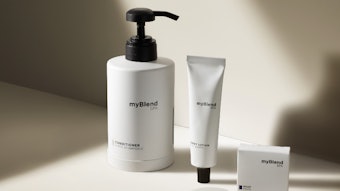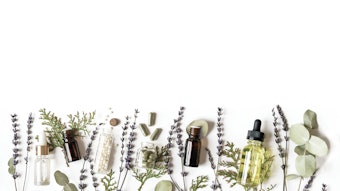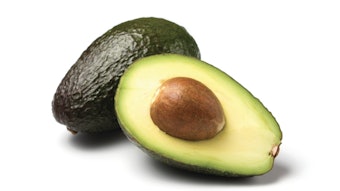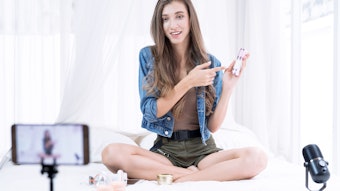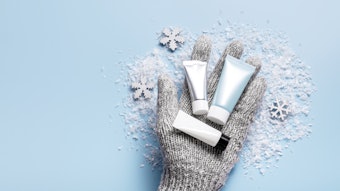
As we approach the new year, the world of skin care continues to brim with exciting possibilities and innovations. But, it can also be confusing to know what is legitimate and not-so-much. That’s why I’m here to guide you through the latest trends I’m seeing as a professional, and offering insights into what's promising and what might not live up to the hype. So, let's dive right in and explore the 2024 skin care landscape.
1. Balancing the Microbiome with Probiotic Skin Care
The concept of a balanced microbiome has gained significant attention in the wellness and beauty industries. Studies increasingly connect gut health to various health issues, including undesirable skin conditions. In fact, it's becoming clearer that many skin conditions like acne, rosacea, psoriasis, hyperpigmentation, atopic dermatitis and premature aging can be linked to gut health. This has given rise to the growing probiotic and microbiome-balancing industry, covering everything from oral supplements to topical cosmetics and creams. In the skin care world, this trend is reflected in probiotic, prebiotic, and postbiotic topical products that claim to support the skin's microbiome. But, can they match the effectiveness of oral probiotics?
In short: no. First, we have limited data on the skin's microbiome. Current research indicates that each person's skin microbiome is unique, and most topical products and cosmetics are unlikely to significantly alter its natural state. Additionally, creating topical formulations that are both sterile, safe, and contain living microorganisms remains a challenge. This is why most skin care products claiming to contain probiotics actually include prebiotics or inactive probiotics. Probiotics are difficult to stabilize and have a limited impact on the skin at this stage.
2. DIY & Homemade Skin Care
A prevailing trend in skin care and beauty involves concerns about the safety and ethical responsibility associated with well-known brand name products. Many individuals are choosing "natural" or homemade alternatives over commercial options. While the clean beauty movement has contributed to these inaccurate musings, there's still something undeniably appealing about picking up homemade products, like that delightful soap with rosemary sprigs from the local farmer's market.
However, it's important to recognize that DIY, homemade, or farm-fresh skin care may come with safety risks that surpass those of any over-the-counter (OTC) skin care brands. Can you be certain that your neighbor, Shirley, is preserving her homemade products correctly? What about potential ingredient contamination or product efficacy? While they may look and smell wonderful, are they truly delivering the intended results?
Some of the most reliable skin care products available are the ones thoughtfully and safely formulated by large companies. These companies possess the financial resources to thoroughly test their products and are subject to regulatory oversight. They also remain at the forefront of innovation and product development, surpassing the capabilities of most small businesses. This is why I generally advise caution when it comes to homemade or DIY skin care products—the risks rarely outweigh the potential benefits. Risks like skin irritation, allergic reactions, exacerbated skin conditions and even bacterial or fungal infection to say the least.
3. Sustainable Skin Care
As global warming becomes an increasingly pressing issue, consumers are becoming more conscious of the environmental impact of their products and the efforts made by their favorite brands to reduce it. However, like any popular trend, sustainability has opened the door for some brands to engage in "greenwashing," where they market themselves as more environmentally friendly than they genuinely are. It's vital to recognize that every consumption, including skin care products, has an environmental impact. To make informed choices, it's essential to dispel some of the biggest myths in the greenwashing space.
Myth #1: Natural, sustainable ingredients are better than synthetic ones
Harvesting natural ingredients can harm the environment and deplete natural resources. In contrast, synthetic ingredients, created in a controlled lab environment, can often be more environmentally friendly and safer than their natural counterparts.
Myth #2: Refillable products are better
While refillable containers may seem like an eco-conscious alternative to single-use ones, they can often amount to just larger containers that you still need to refill and eventually dispose of. Additionally, exposing skin care products to air and light can lead to instability issues. Instead, consider simplifying your skin care routine and buying only what you'll use up, then dispose or recycle the products appropriately. Avoid purchasing things you will not use.
Myth #3: Clean products are more sustainable
The term "clean" in the beauty and skin care industry lacks a regulated definition, allowing brands to define it as they see fit. This leaves room for misleading marketing claims, making you believe that products with omitted ingredients or organic components are inherently more sustainable. Greenwashing often thrives on this ambiguity, so it's crucial to stay well-informed and scrutinize marketing claims.
Related: 5 Skin Health Trends for 2024
4. "Skintoxing" or Skin Detoxing
The notion of a detox sounds appealing and beneficial, but over the past couple of decades, many brands have led us to believe that we are personally responsible for detoxifying our bodies. This has given rise to a substantial industry of detoxification products, including supplements, teas, and skin care practices that promise all-encompassing cleansing. However, the reality is that our bodies already possess remarkable natural detoxification mechanisms, which include our skin!
Another interpretation of "skintoxing" pertains to eliminating ingredients that are perceived as "toxic" by certain media opinions. This links back to the fear-mongering aspect of the clean beauty movement, which sometimes misrepresents specific ingredients as toxic when, in reality, their safety depends on the dosage. Remember, the dose makes the poison, and even water can be toxic in excessive amounts. Topical cosmetics are generally well-regulated worldwide, and there is often no need to fear skin care products. However, if you have concerns, I recommend exercising caution with local or handmade products, as these may lack rigorous regulation and quality standards.
Lastly, there is a perspective advocating for allowing our skin to "breathe" and embracing "skinimalism" as part of the skin detox process. This entails temporarily eliminating all beauty and skin care products to let the skin "reset." This notion can be inaccurate and even lead to discomfort for some individuals. It's crucial to understand that skin does not "breathe" in the same way our lungs do. While it absorbs oxygen from the air and our blood, it can do so even with skin care products on. Most skin care products will eventually absorb or evaporate. The key concern is to maintain proper hydration to prevent water loss and inflammation. Therefore, the most effective way to support skin's natural detoxification is to maintain a consistent skin care routine tailored to skin type and conditions, while also embracing a healthy lifestyle that safeguards the detox organs, including the lungs, kidneys, liver, colon, and of course, the skin. Skin's health and natural detoxification processes are best served through a well-considered daily regimen and a holistic approach to overall well-being.
5. Home Skin Care Devices and Treatments
At-home skin care devices offer convenience and potential cost savings, but not all of them are as effective as professional treatments. Some are also exorbitantly priced. Here are my key dos and don'ts for using in-home skin care devices. It's essential to recommend your clients do research and consult with skin care professionals if they decide to include these devices in their routine.
The Dos:
-LED Masks and Panels: LED light therapy is a suitable option for homecare devices when the brand has a good reputation and offers quality products. Opt for devices with a larger surface area for more effective results.
-Ultrasonic/Sonophoresis: There are safe and effective ultrasonic devices available that can enhance the penetration of skin care ingredients, making them work more effectively.
-Cryotherapy/Heat Therapy: Depending on skin conditions and goals, heat and cold therapy devices can accelerate skin care results. Your clients can also explore using household items like refrigerated spoons or heating pads.
The Don'ts:
The devices and treatments mentioned below can be dangerous or harmful if attempted without professional guidance.
6. Beauty Supplements
The concept of improving skin from the inside out with supplements and powders is undeniably appealing. Some ingredients, such as oral probiotics and specific vitamins and minerals, have solid scientific support. However, many ingredients like collagen, biotin, and various nutrients lack robust evidence to back their skin-related claims. In my experience, maintaining a well-balanced diet rich in colorful fruits and vegetables is the ultimate "supplement" for radiant skin.
7. Personalized Skin Care
One notable trend of 2024 is the rise of customized skin care. Although we, as professionals, have long emphasized the significance of tailored skin care approaches, the beauty industry is now catching on to its importance. It's crucial to recognize that genuine personalized skin care requires a thorough analysis of an individual's skin needs. Warn your clients to be wary of products that claim to be personalized without comprehensive assessments and consultations with skin care professionals—especially automated bots, online quizzes and AI programs. While these may seem fun and convenient compared to virtual or spa appointments with professionals, they often yield disappointing results.
Emily Trampetti is a multi-state licensed esthetician, skin care expert and founder of Skin Property Virtual Esthetics. After successfully owning and running her spa in Chicago, she founded her proprietary virtual skin coaching program in response to a void in the industry. Emily found that most of her clientele were overspending on skin care treatments with little or lackluster results. Enter Skin Property Virtual Esthetics, which was born of the idea that better skin is achieved by more personalized, daily practices at home, along with professional guidance and taught secrets. Skin Property Virtual Esthetics took on its first client in 2020 and now supports clients from over 15 states, Puerto Rico and Europe. Emily’s mission is to empower her clients to finally feel in control of their skin and reach their goals through completely personalized skin care routines, tailored education and lifetime empowerment.
